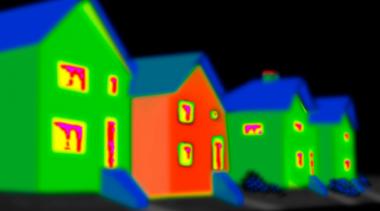Making rural heat networks happen
What are the main viability factors which impact rural heat networks? Alistair Mumford explains.
11th March 2016 by Networks

Rural, community-led heat networks are possible in the UK and Regen SW has been working for the Department of Energy and Climate Change (DECC) to understand the main viability factors: planning policy, gas grid and heat load.
Planning policy
It can be very helpful, if not vital, if there is planning policy to support heat network ambitions. Each local authority should have written or be in the process of writing a local plan that may contain policies encouraging heat networks. Furthermore, many communities are writing neighbourhood plans that can specifically encourage certain improvements to local areas such as heat networks.
Heat networks have to apply for planning for the pipe network and the energy centre. Planning policy can also encourage housing developers to establish a new heat network or connect to an existing system. This could be the opportunity a community-led heat network development needs to get started. However, many housing developers will argue that heat networks are unviable and Regen is supporting local authorities in the testing of these claims.
There are a growing number of urban local authorities with supportive planning policies such as Bristol City Council and Leeds City Council. However, Regen is not aware of any rural councils in England with supportive planning policies and this highlights the importance of neighbourhood plans where community led action could make a difference.
Off the gas grid
Heat networks can offer consumers cheaper heat and more stable prices. This is even more the case with alternatives to gas – i.e. electricity, coal, LPG. This greater margin helps with the viability of a heat network and so off-gas areas are prime development areas. When heat networks are powered by waste materials, fuel costs can be low and the potential to use a communities waste arisings, whether organic or non-organic, could help to make a more secure community.
Potentially the first community-led heat network will be in Bootle, Cumbria which is off the gas grid. When selling the idea to home-owners, they found that the bundling of improved broadband services into the package made a significant difference.
The Centre for Sustainable Energy has a list of postcodes off the gas grid.
High, dense heat demand
As with every business you need a market, and buildings using heat regularly and throughout the year help to provide that regular, consistent customer. Often this might be an office building, leisure centre, school or hospitality business. The more buildings with high heat demands that can connect, the better the opportunity.
The longer you have to transport your product to the customer, the higher the cost for each sale. So with a heat network, the denser the locality the better. Typically, a hamlet with 5 or 6 detached homes with lots of space in between them would not be a good opportunity due to the need for long pipes to low demand customers. Single buildings with multiple bill payers can offer a good opportunity, often with lower capital costs than a network associated with separate buildings. Roads are expensive to dig up for pipes so can make projects unviable, but laying under grass is much cheaper, known as ‘soft dig’ rather than ‘hard dig’.
There are many other factors influencing a heat network’s viability and our community heat network toolkit will help to guide groups. We’ve seen a massive rise in community electricity groups in the UK, installing small and large schemes and many generating funds for fuel poverty actions. The natural evolution is into heat and we’re confident the power and enthusiasm held by community groups will make this happen. Alistair Mumford, senior project manager, Regen South West
Comments
Login on register to comment
Related content

Gas
Cadent backs launch of major bio-CNG HGV refuelling station
Gas network’s £250,000 infrastructure investment ensures supplies to existing connected customers have not been impacted

Gas
Editor’s blog: The biggest tests of resilience are yet to come
Network content director Jane Gray reflects on the industry's coronavirus response to date and the challenges still to come.

Gas
From the front line: Chris Garside and Andy Simcoe, Northern Gas Networks
Key workers across the power and gas networks are playing a critical role in the national response to Coronavirus. Network has committed to profiling their stories.
Related supplier content
![‘Learning by doing’ on the road to net zero [test product]](https://networksonline.s3.amazonaws.com/products/images/3.jpg)
People & Skills
‘Learning by doing’ on the road to net zero [test product]
DSO director Andrew Roper discusses 'Learning by doing'

Power
Load patterns and lockdown: how Covid-19 is impacting electricity networks
Insights into dynamics on the low voltage network as the outbreak unfolds

Heat
How E.ON. is helping the City of London become a zero emissions city
Discover Citigen. Deep in the heart of our bustling capital